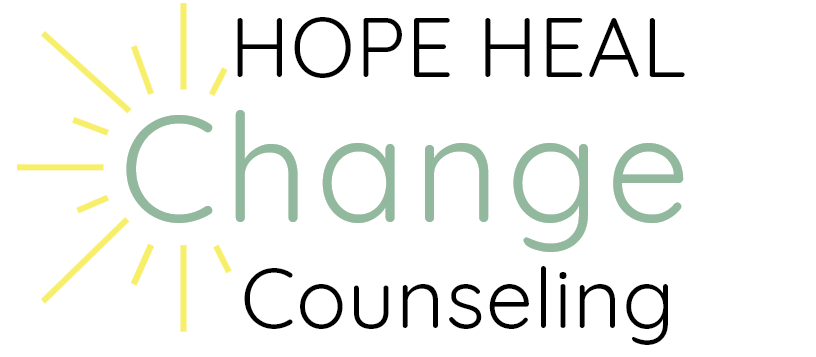What Cognitive Behavioral Therapy is and How I Use it in Sessions with Clients

When a client comes in for therapy for the first time, one term that they often hear in regards to mental health therapy is “Cognitive Behavioral Therapy” (CBT). Today, I hope to explain what it is and how I use that in practice. Moreover, my hope is that after reading this blog, you’re equipped with some CBT so that you can start using it in your day to day life. But before I dive in, I want to preface the heart of my blog by saying that CBT isn’t for everybody nor is it a magic wand. I use CBT with some clients and I also integrate other techniques/theoretical orientations in like Motivational Interviewing and my personal favorite, Internal Family Systems. I cannot think of one case where I’ve strictly used just CBT as a means of treatment. For some cases, though, CBT doesn’t even enter the arena. Okay, preface over—here we go.
Cognitive Behavioral Therapy: The Definition
Cognitive Behavioral Therapy is the evaluation of your thoughts and how your thinking can drive feelings and behaviors. As therapists, we try to point out when someone is having “stinkin’ thinkin” because that thinking can lead us down a rabbit hole of intense negative feelings which can result in destructive or unhelpful behavior. However, we’re all guilty of “stinkin’ thinkin”. All of us hold irrational myths and beliefs about ourselves and others. These myths and beliefs are often very deeply rooted and when certain situations come about, we jump to one of these thoughts.
For example, we try to talk to our college professor about an assignment. We stumble over a word or two and we go straight to, “Why am I so awkward”. We call this an Automatic Negative Thought (ANT). This thought can feel very intense and make us feel horrible about ourselves. To ease the pain of our feelings, we do all sorts of things. These may include yoga, therapy, drinking, cutting, isolating, sleeping, going for a walk, etc. For better or worse, we ease our pain because that’s the most human thing to do.
Common ANTs in CBT
In CBT, we invite our clients to become very aware of their most prevalent ANTs. Here’s a list of common ones I hear in therapy:
- I’m ugly
- I can’t do anything right
- No one loves me
- I’m so awkward
- I’m a burden to people
- Everyone is judging me
- Everyone would be better off without me
- I’m not fun
- I shouldn’t complain because people have it worse than me
- I’m unlovable
Exploring ANTs in Cognitive Behavioral Therapy
Once the client becomes keenly aware of their ANTs, they can start to explore the origins of the thought. Where did it come from? When do I tend to have this thought? This exploration is important because then we can start to challenge this negative thought. The challenge is to determine if the thought is rational or irrational. The more we understand the ANT and where it comes from, the better. I often ask clients how intensely they feel these thoughts to point out that this is challenging and that the thought can become very consuming. Also in this exploration phase, we uncover how the ANTs influence our feelings; and then, of course, how those feelings influence our behavior. The idea behind this is, if we can catch that we are having an ANT right away, we can quickly reframe the thought to avoid going down the negative rabbit hole.
After some exploration, I ask my clients to challenge their ANTs. This is the hardest part of the CBT process. It requires pulling the weed that’s been growing for a lifetime. However, if a client tells me how awkward they are about stumbling over some words with their professor, I might ask them to think of a time where someone stumbled over words with them. And did they judge them for that? Did they think, “this person is sooo awkward, wow?” Or did they have empathy and grace? Most of us are our own worst critics. However, we can logically and reasonably challenge the ANT and from there can determine that most of these “stinkin’ thinkin’s” are irrational. If we determine that the thought is rational, we ask ourselves who we want to be in the face of that situation or fear.
Using Cognitive Behavioral Therapy to Reframe our ANTs
Moving forward in the CBT process, we begin to reframe our ANT to something more fair and reasonable. For our example, that may be “We all stumble over our words sometimes,” or; “So what, I’m allowed to make social mistakes from time to time.” It’s important to be aware that this is a skill that needs to be developed and honed. It is not something you get right the first time, or even the eight time. Practice patience and trust the process. So here’s the formula in its entirety:
Situation:
I stumbled over some words when talking to my literature professor after class.
Intensity:
8/10 (this is a good way to measure how much it might be impacting life)
ANT:
I’m so awkward. No one must like me.
Challenge to the ANT:
I don’t feel negative towards anyone who has stuttered or stumbled over words. Nor do I wonder how anxious or awkward they feel in that moment. I’m mostly focused on myself and the content of what they are saying.
Is my ANT Rational or Irrational:
Irrational
Reframing the ANT:
- We all stumble over our words sometimes
- So what, I’m allowed to make social mistakes from time to time
- Every social interaction is a great opportunity for me to practice my oration
Cognitive Behavioral Therapy as a Disruptor
Think of CBT as trying to disrupt a negative cycle right where the cycle begins: with our thinking. I also believe that IFS can be a great compliment to CBT in that when we are replacing that automatic negative thought, we can have a compassionate, respectful and loving conversation with a part of ourselves that’s hurting and begin to repair our inner-relationship. Again, an integrative approach where multiple methods are being used will be the norm for most therapists out there.
Getting Started…
So, where do you start and how do you put this in practice? Well, I would start by acknowledging that you do carry some negative opinions about yourself that have become a personal fact. I’d start writing down those automatic negative thoughts down in your phone and build a list of the negative messages that you consistently send to yourself. Once you feel like you have a good handle, start that exploration process and those “where” and “why” questions to boost your self-understanding. And then the hard part, use your logic and reason to challenge and debunk these negative thoughts and myths. Practice it over and over and over again until it becomes second nature.
So, now when you hear the term “Cognitive Behavioral Therapy”, you know a little something about it!
